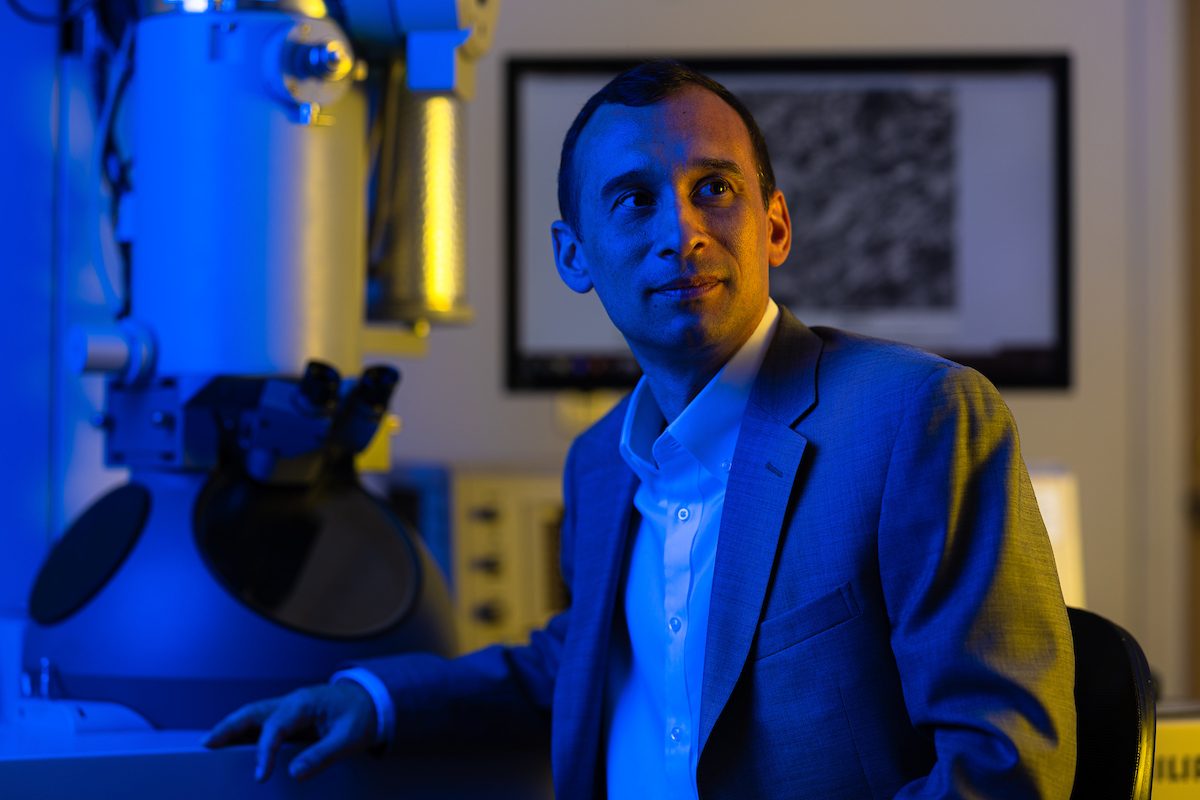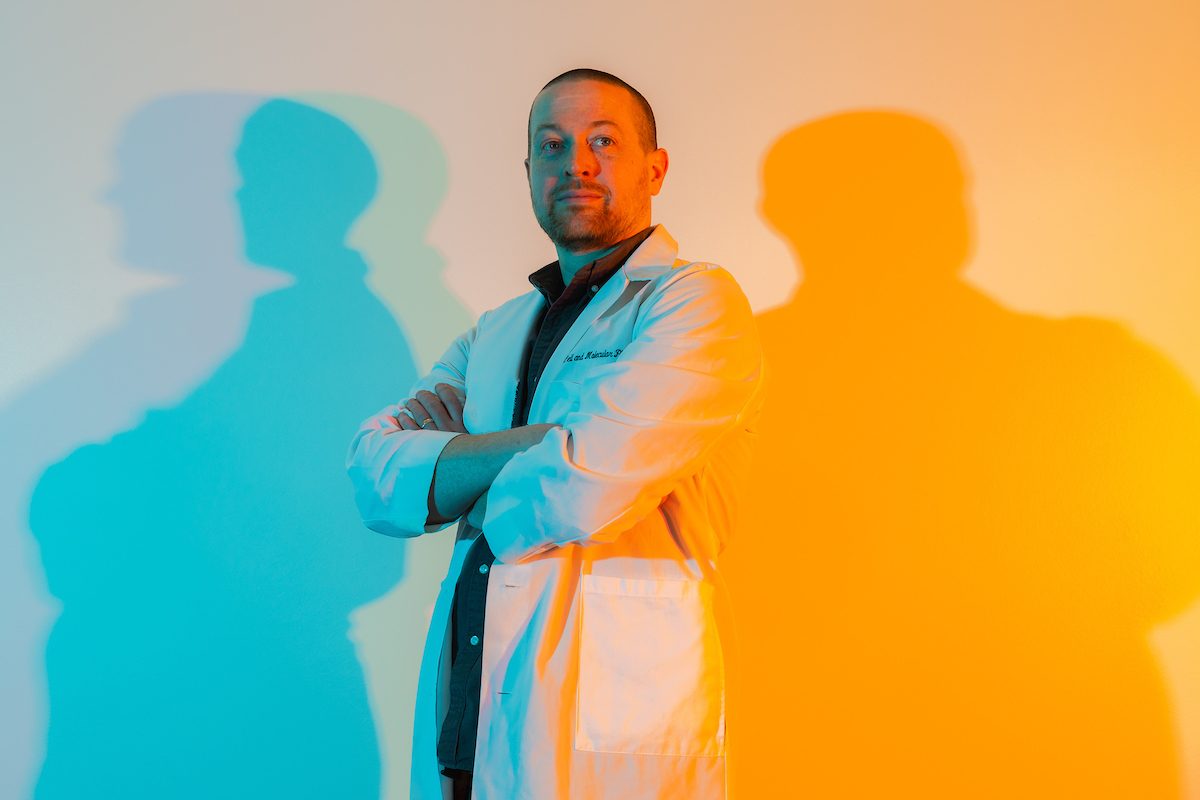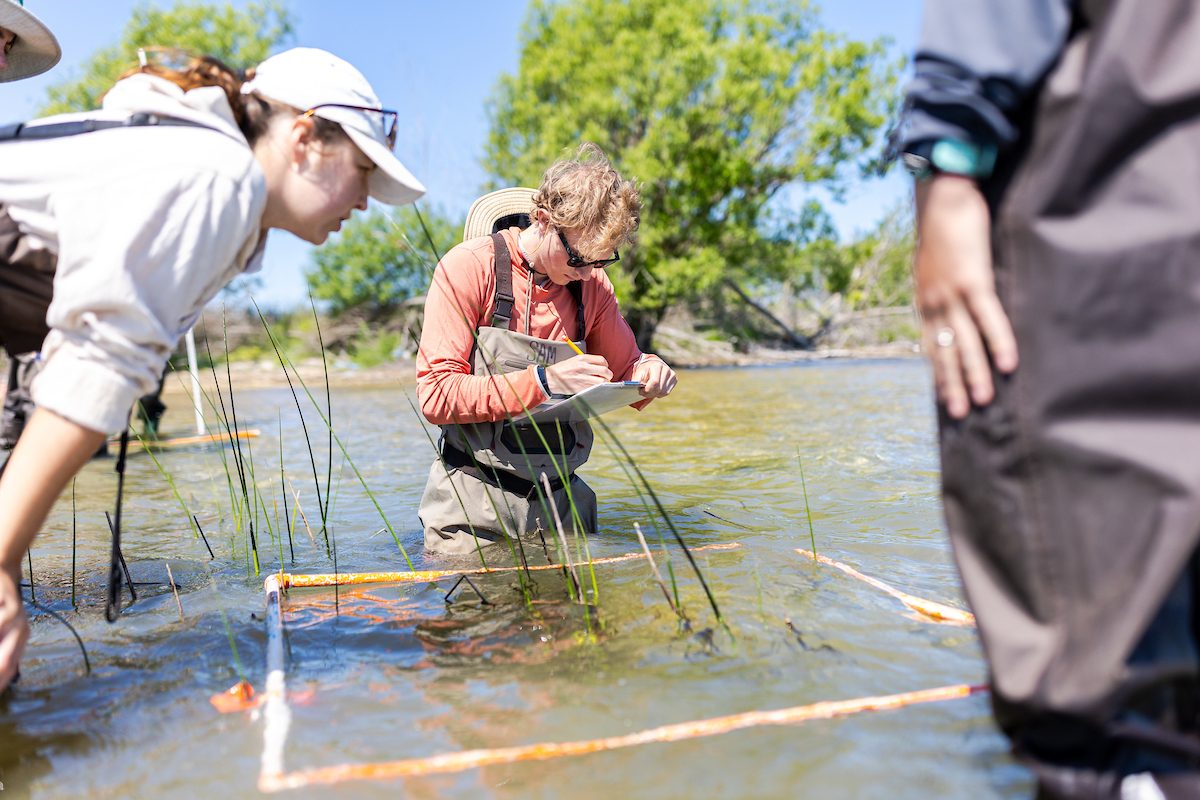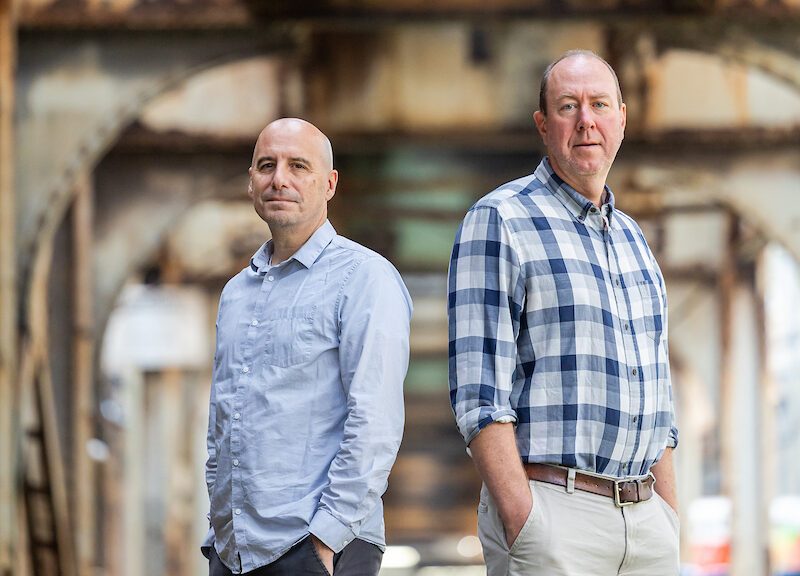Stritch professor rethinking drug discovery with novel approach

Molecular Pharmacology and Neuroscience Assistant Professor Rocco Gogliotti seeks to change outcomes for children living with Rett syndrome (RTT), a rare, autism-associated and neurodevelopmental disorder caused by a gene mutation. With his research, he also hopes to find clues to other autism-associated diseases.
How?
Through a better understanding of underlying causes, a novel approach to developing treatments, and a drive fueled by a commitment to service. Gogliotti’s research focuses on integrating genomics, pharmacology, neuroscience, and importantly, human biomaterial, into the drug discovery process for neurodevelopmental disorders. This integration helps researchers gain a better understanding of the origin of specific diseases, which ultimately can lead to the development of more targeted therapeutics.
Studying an organism’s genetic material (genome) and how that information is applied may hold clues to disease progression and treatment. Every living thing, from the tiniest bacteria cells to plants, animals, and humans, has a genome. For humans, that genome is DNA, the molecule that contains genetic information for how a cell develops and functions. Gogliotti joined Loyola in 2020, where he teaches at Stritch and in the Graduate School’s biomedical science programs. He conducts his research in the Center for Translational Research and Education, where his collaborative style aligns with Loyola’s approach to science and discovery.
He enjoys mentoring and customizes a training plan for each student to help them achieve their goals. With significant funding (a prestigious R01 grant from the National Institutes of Health, an R21 from the National Institute of Child Health and Human Development, and an innovation award from the International Rett Syndrome Foundation [IRSF]), Gogliotti is developing a robust research pipeline. At Northwestern University, where he earned his PhD in biomedical research, Gogliotti investigated spinal muscular atrophy (SMA). It was there that he learned about the important role patient family foundations often play in drug discovery and how the SMA family foundations helped develop an effective treatment so that children with the disease live better than they had a decade earlier. Gogliotti then pursued his post-doctoral training at Vanderbilt University’s Warren Center for Neuroscience Drug Discovery.
Working with Drs. Colleen Niswender and P. Jeffrey Conn, Gogliotti set out to identify new treatments for RTT. RTT is unique among neurodevelopmental disorders because, in these cases, children are born healthy, reach typical developmental milestones, and then around 18 months, experience developmental regression. The cause of the regression is not yet known. Based on his past experience with family foundations, Gogliotti and his team started by working with the IRSF to develop new ideas on how best to identify new targets and manage the disease.
“When you meet families and parents with children who live with these diseases, that’s where my calling came from,” says Gogliotti, who has always been fascinated with a career in service. “And to be part of the effort to effect change on the research side is incredibly rewarding.” Historically, drug discovery relies heavily on target identification in cell culture or mouse models, with the hope that the resulting treatment will work in people.
Yet those long-standing models were not producing results, particularly in neuroscience drug discovery, where promising preclinical results routinely fail to replicate in clinical trials. Often, developing therapeutics goes from the research bench to the bedside. Gogliotti flipped that concept, focusing instead on what is known as translational relevance, which means translating basic science discoveries more efficiently into practice.
"We are helping to establish a model where the patient comes first, where we first identify what is disrupted in the individual.”
— Rocco Gogliotti , Assistant professor, molecular pharmacology and neuroscience
The Vanderbilt team worked with the IRSF to obtain biomaterials which it then coupled with next-generation sequencing for a promising, renaissance-like approach that allows a project to begin with the knowledge that the target is disrupted in patients. Working with a large cohort of brain samples allowed the team to look comprehensively at pathways disrupted in people with RTT and then identify differences across individual patient subpopulations.
“We are helping to establish a model where the patient comes first, where we first identify what is disrupted in the individual,” Gogliotti says, rather than over-relying on mouse models. “At some point over the last few decades, researchers forgot that mice are not people,” he says, with a smile. In his Stritch lab, Gogliotti and his team (three students, a post-doc, and a research assistant) are forging ahead with a new model for drug discovery.
The team works with more than 45 autopsy samples, and no other labs developing therapeutics for RTT are working at the same scale. His team identified mutations that alter gene expression patterns and a particular mutation that predicts disease severity. The overarching theme of his work is to replace the long-standing drug discovery mantra of “more shots on goal” with one that emphasizes “better shots on goal.”
To develop a potential therapeutic, the Gogliotti lab focuses its efforts in three areas: 1) identifying targets that are disrupted in all RTT patients, 2) developing precision-medicine approaches for targets that are disrupted only in distinct patient subpopulations, and 3) developing RNA-therapeutics to target the gene mutated in 95 percent of RTT patients (methyl-CpG binding protein 2 or MECP2). Through these three research pillars, Gogliotti’s students receive training in genetics, pharmacology, molecular biology, and neuroscience.
“It is important to me that trainees learn how to address hypotheses using multiple approaches,” says Gogliotti. “It is only by looking at a problem from every angle that we can form a clear picture of how best to solve it.”


